Guanacos are South American members of the Camelidae, or camel, family. They live throughout the mountain and steppe regions of southern South America. Other members of the camel family include camels, llamas, vicunas, and alpacas. Humans bred wild guanacos to create the domestic llama. Read on to learn about the guanaco.
Description of the Guanaco
Like most species, the wild counterpart of the domestic llama is smaller and leaner than their farm-raised cousins. Guanacos have long legs and long necks, much like the rest of their family. They stand about 3.5 ft. tall at the shoulder and weigh about 250 lbs. on average.
The guanacos in the northernmost extent of their range are smaller than those in colder, southernmost regions. Color also varies slightly by region, but most individuals have light brown or tan fur.
Interesting Facts About the Guanaco
Guanacos are furry, llama-like creatures with a variety of interesting behaviors and traits. Learn more about what makes guanacos unique below.
- Llama Momma – Researchers did not confirm that guanacos were the original descendants of the llama until 2001. However, during this genetic research, scientists found something interesting. Our domestic llamas contain small amounts of alpaca genes as well!
- Thick Neck – The skin on a guanaco’s neck is much thicker than the rest of its body. Some people even make shoes out of the skin on their necks! This interesting trait helps protect the guanaco from predators. The skin is so thick that it is one of the last parts of the animal to decay, and many guanaco skeletons still have their neck skin attached.
- High Altitude – Most of the time, this species lives at very high altitudes. The higher up you live, the less oxygen you can find in the air around you. To help survive these harsh conditions, guanacos have lots of extra red blood cells. In fact, they have four times as many red blood cells as humans!
- Resource Guarding – Instead of protecting a specific herd of females, male guanacos defend a territory. They choose their territory based on access to the best foods, and let the females come to them. If the females don’t like a male’s territory, they move on to the next one.
Habitat of the Guanaco
These mammals live in a variety of harsh habitats. They live everywhere from the driest deserts to the coldest mountain ranges. Their preferred ecosystems have open areas without cliffs or rocky outcrops.
Some of the different habitats that they range through include grasslands, mountains, shrublands, steppe, forests, savannas, and more. They occupy areas from sea level up to nearly 15,000 ft. high.
Distribution of the Guanaco
Populations of guanacos live throughout southern regions of South America. They inhabit sparse ranges in Peru and Bolivia, all the way to the tip of South America. Their range in Chile runs along the border of Argentina along the Andes Mountains.
They live primarily along the mountain range in northern Argentina, but their populations extend eastward to the coast in southern Argentina. Humans have also introduced this species to the Falkland Islands.
Diet of the Guanaco
Guanacos are herbivores, and eat only plants. Their feeding strategy includes both grazing for grasses and browsing on leaves and shrubs. In some areas, they eat just a few species of plants, while in other areas they eat numerous kinds.
Some of the different types of plants that compose their diet includes flowers, lichens, grasses, fruits, shrubs, and even fungi. Much of their water comes from the plants that they eat.
Guanaco and Human Interaction
Though humans and guanacos interact in numerous ways, their populations remain stable. However, this is only through careful management, and wild populations face pressure from human activity. Humans hunt young guanacos for their hide. We also capture adults alive to shear and release them, but the stress of capture and shearing does impact their ability to survive.
Farming also poses a threat to these animals, because livestock directly competes with guanacos for what sparse foods are available. Through proper management, their populations remain stable and the IUCN lists them as Least Concern.
Domestication
While guanacos themselves are wild animals, the domestic llama is a direct descendant of these creatures. However, modern llamas are now a separate species.
Does the Guanaco Make a Good Pet
Even though llamas can make good pets, guanacos do not make good pets. They look like llamas, but guanacos are wild animals and do not thrive when interacting with humans. Instead, choose one of their domestic counterparts.
Guanaco Care
Humans keep herds of guanacos in several different zoos across the world. Because they are social creatures, it is important that zoos keep them in groups. If you are visiting a zoo, be careful not to make these creatures angry because they can spit their stomach contents up to six feet away!
You shouldn’t have much to fear however, as zoos house these mammals in large enclosures with plenty of space between you and the animal. Zookeepers feed their guanacos a variety of hay, grasses, and pelleted feed.
Behavior of the Guanaco
These large mammals live in groups known as herds. Breeding males protect territories with various resources, but not all males can hold territories. Because of this, social structures vary.
Some males live in herds with females and their offspring, others live in bachelor groups, and others spend most of their time alone or loosely associated with other solitary males. Males protect their females from predators and other males, and breed with all the females as the mating season arrives.
Reproduction of the Guanaco
Females in a herd breed with the dominant male who holds the best territory. After mating, the female has a gestation period of about six months. They give birth to a single baby, known as a “chulengo.” Chulengos stand shortly after birth, and begin following their mothers around.
Chulengos start eating solid food when they are just a few weeks old, but do not wean off their mother’s milk until they are eight months old. Chulengos stay with their mother until they are a year or a year and a half old, and females usually remain with their mother’s herd.


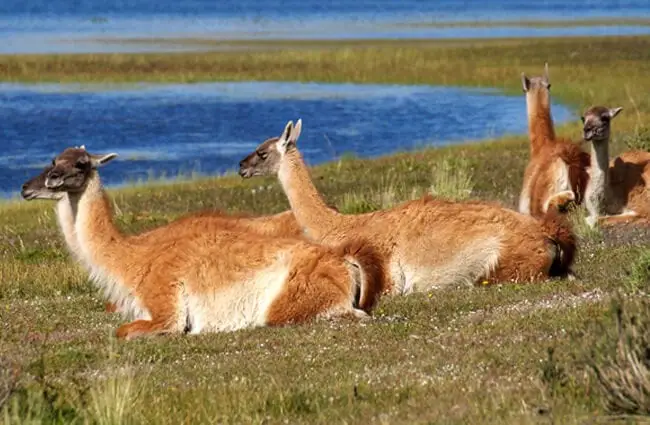
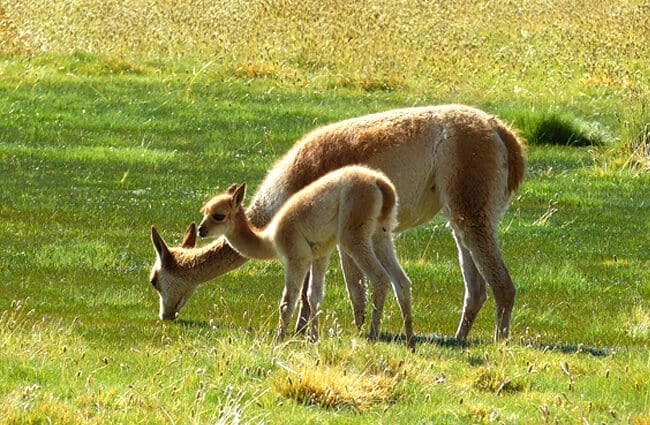

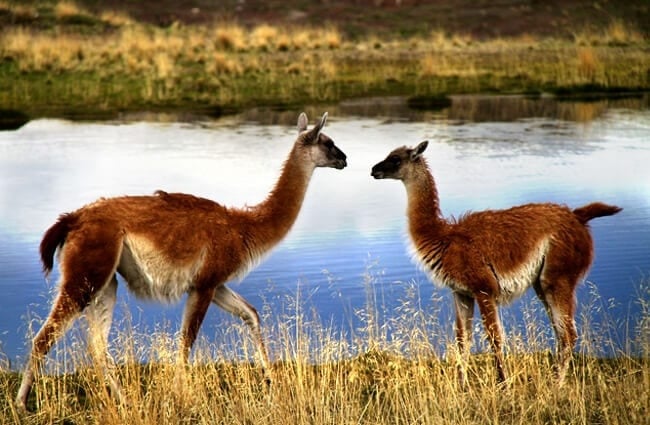
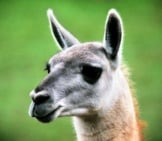

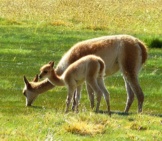
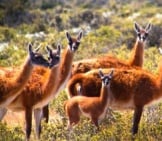
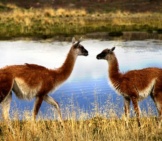
![Red Angus Closeup of a beautiful Red Angus cowPhoto by: U.S. Department of Agriculture [pubic domain]https://creativecommons.org/licenses/by/2.0/](https://animals.net/wp-content/uploads/2020/03/Red-Angus-4-238x178.jpg)












![Red Angus Closeup of a beautiful Red Angus cowPhoto by: U.S. Department of Agriculture [pubic domain]https://creativecommons.org/licenses/by/2.0/](https://animals.net/wp-content/uploads/2020/03/Red-Angus-4-100x75.jpg)

